Abstract
Humic and fulvic acids were tested for their ability to interfere with virus recovery by microporous filters. Two electropositively charged types of filter (Seitz S and Zeta Plus 60S) were used to concentrate poliovirus in the presence of humic materials. Humic acid inhibited virus adsorption, but even at the highest humic acid concentrations tested (200 mg/liter), 30 to 40% of the virus was recovered by the filters. Fulvic acid, tested with Zeta Plus filters, did not affect virus recovery. For comparison, two electronegatively charged filter types were tested (Cox and Balston). These two types of filter were more sensitive to interference at lower concentrations of humic acid than the more positively charged filters. With Balston filters, at humic acid concentrations above 10 mg/liter, most of the virus was recovered in the filtrate. Fulvic acid, tested with Balston filters, did not interfere with virus recovery. With the electropositively charged filters, the humic materials adsorbed efficiently, even at high input concentrations. Interference with virus adsorption occurred at humic acid concentrations which were below the level of saturation of the filters. In addition, in high-volume experiments, humic acid led to premature blockage of the filters. The efficiency of virus recovery by a second concentration step, organic flocculation of the filter eluate, was tested. For all the filter types tested, this procedure was not affected by the presence of humic or fulvic acid in the input water.
Full text
PDF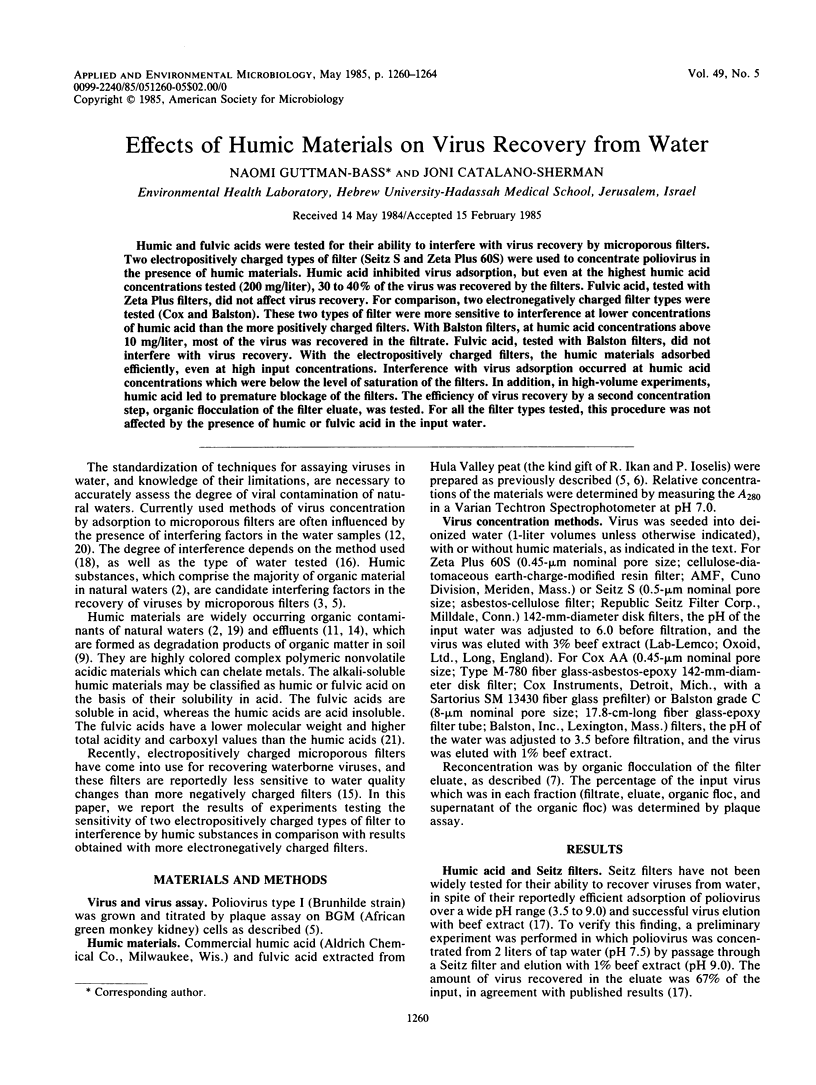
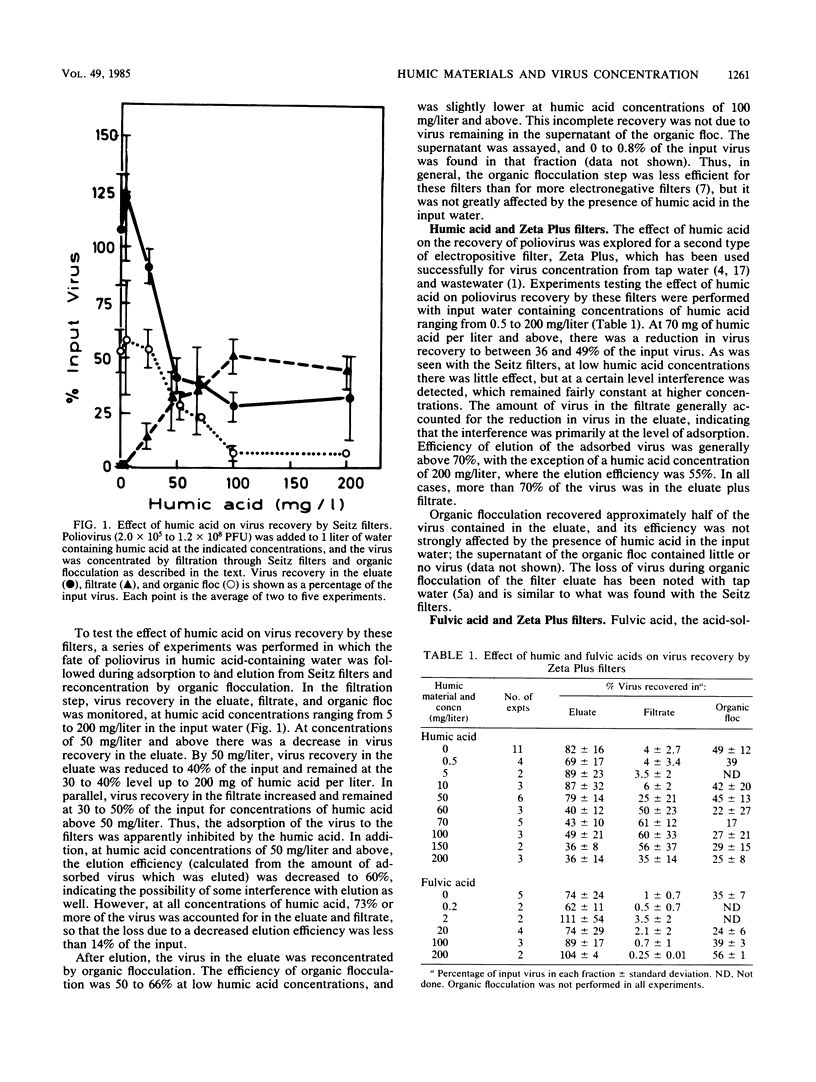
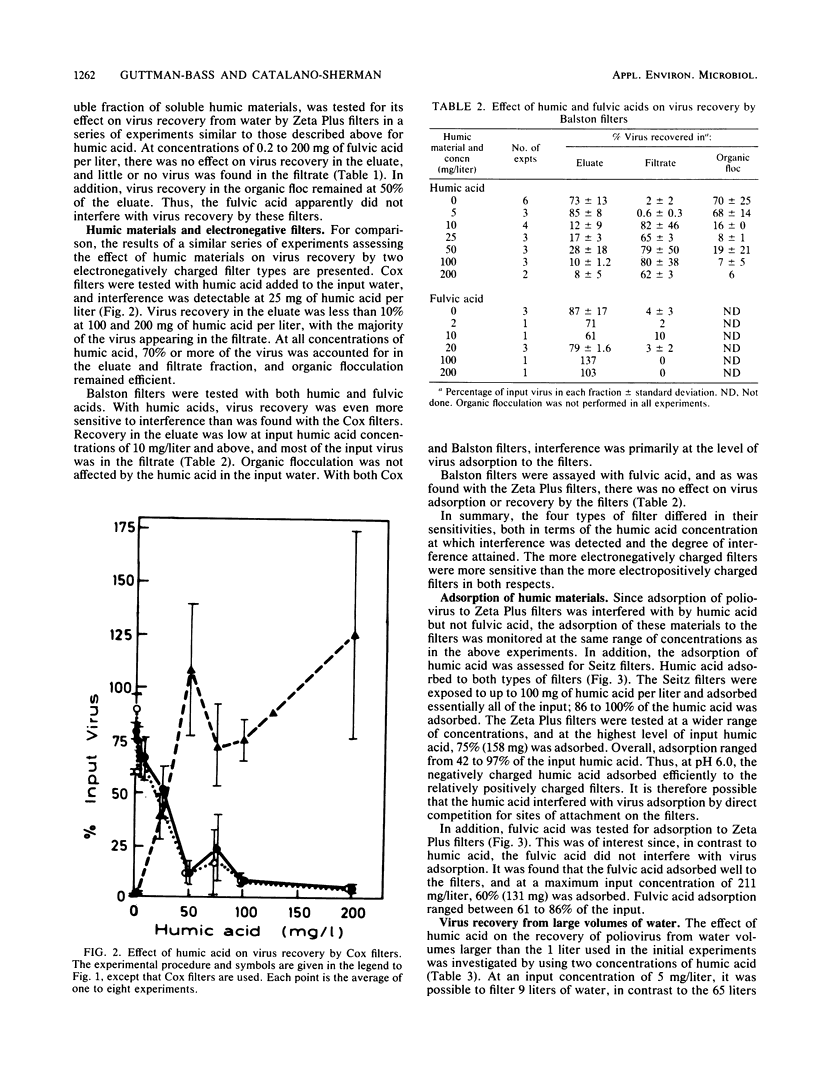
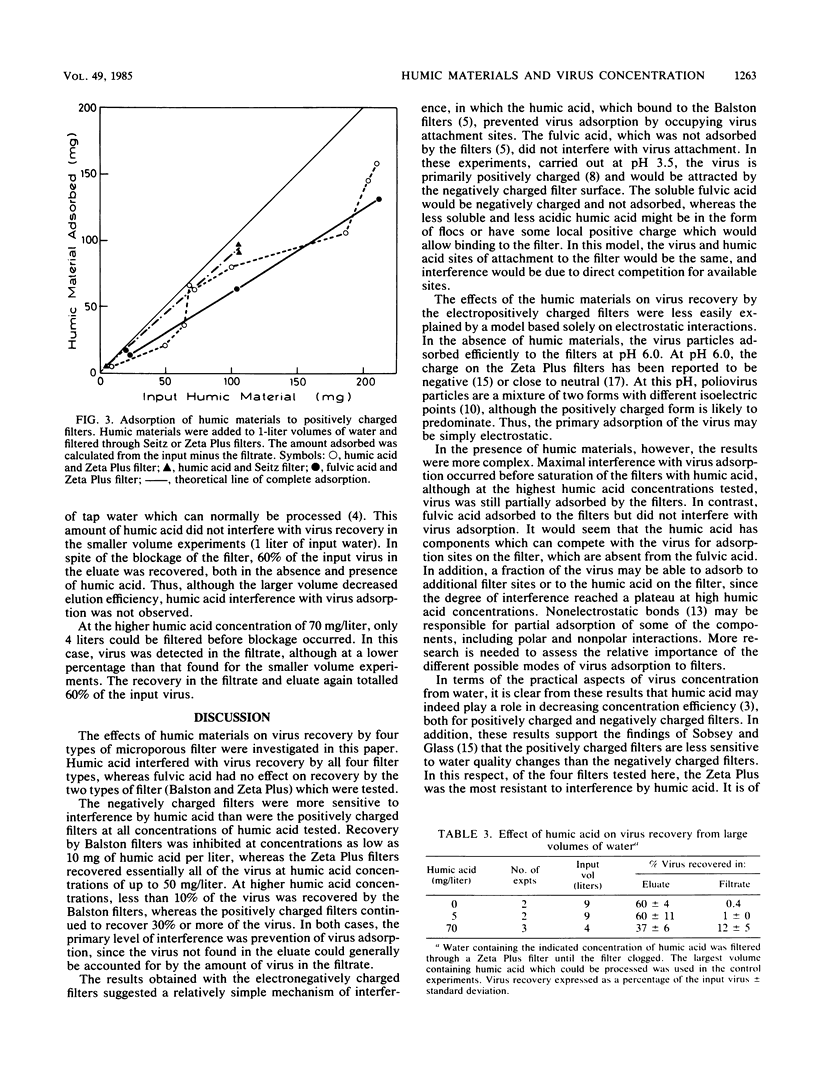
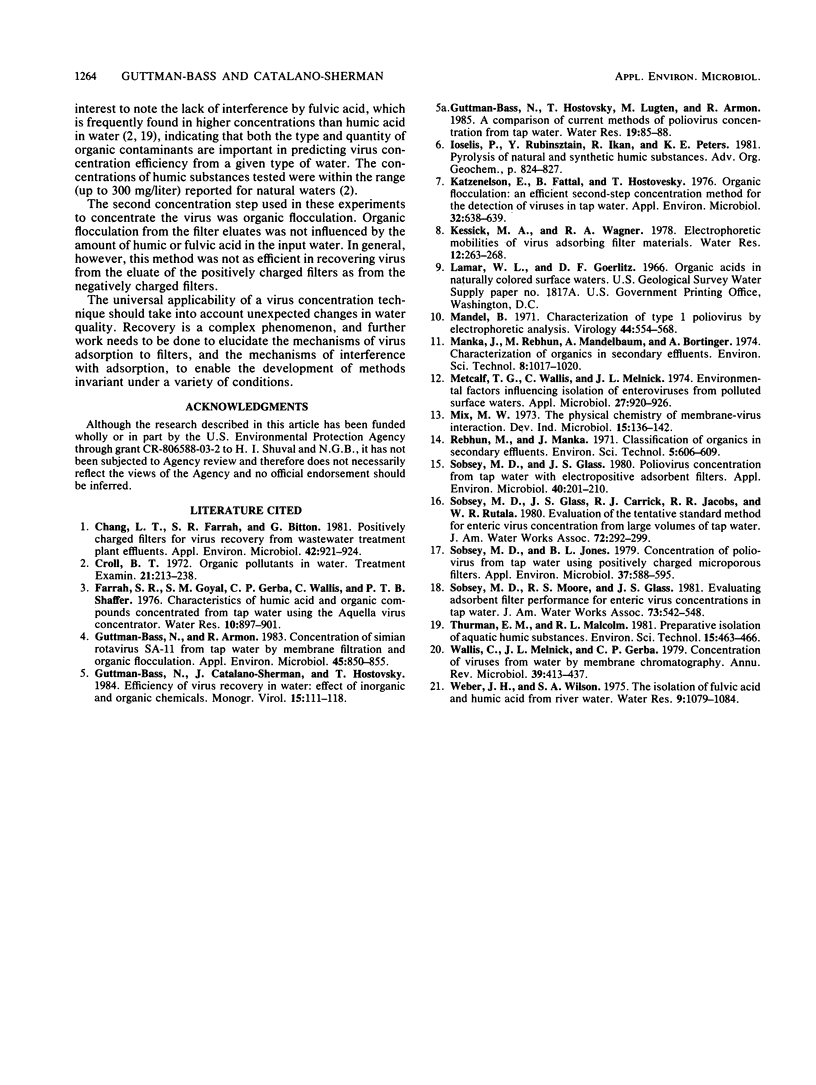
Selected References
These references are in PubMed. This may not be the complete list of references from this article.
- Chang L. T., Farrah S. R., Bitton G. Positively charged filters for virus recovery from wastewater treatment plant effluents. Appl Environ Microbiol. 1981 Nov;42(5):921–924. doi: 10.1128/aem.42.5.921-924.1981. [DOI] [PMC free article] [PubMed] [Google Scholar]
- Guttman-Bass N., Armon R. Concentration of simian rotavirus SA-11 from tap water by membrane filtration and organic flocculation. Appl Environ Microbiol. 1983 Mar;45(3):850–855. doi: 10.1128/aem.45.3.850-855.1983. [DOI] [PMC free article] [PubMed] [Google Scholar]
- Katzenelson E., Fattal B., Hostovesky T. Organic flocculation: an efficient second-step concentration method for the detection of viruses in tap water. Appl Environ Microbiol. 1976 Oct;32(4):638–639. doi: 10.1128/aem.32.4.638-639.1976. [DOI] [PMC free article] [PubMed] [Google Scholar]
- Mandel B. Characterization of type 1 poliovirus by electrophoretic analysis. Virology. 1971 Jun;44(3):554–568. doi: 10.1016/0042-6822(71)90369-2. [DOI] [PubMed] [Google Scholar]
- Metcalf T. G., Wallis C., Melnick J. L. Environmental factors influencing isolation of enteroviruses from polluted surface waters. Appl Microbiol. 1974 May;27(5):920–926. doi: 10.1128/am.27.5.920-926.1974. [DOI] [PMC free article] [PubMed] [Google Scholar]
- Sobsey M. D., Glass J. S. Poliovirus concentration from tap water with electropositive adsorbent filters. Appl Environ Microbiol. 1980 Aug;40(2):201–210. doi: 10.1128/aem.40.2.201-210.1980. [DOI] [PMC free article] [PubMed] [Google Scholar]
- Sobsey M. D., Jones B. L. Concentration of poliovirus from tap water using positively charged microporous filters. Appl Environ Microbiol. 1979 Mar;37(3):588–595. doi: 10.1128/aem.37.3.588-595.1979. [DOI] [PMC free article] [PubMed] [Google Scholar]
- Wallis C., Melnick J. L., Gerba C. P. Concentration of viruses from water by membrane chromatography. Annu Rev Microbiol. 1979;33:413–437. doi: 10.1146/annurev.mi.33.100179.002213. [DOI] [PubMed] [Google Scholar]


